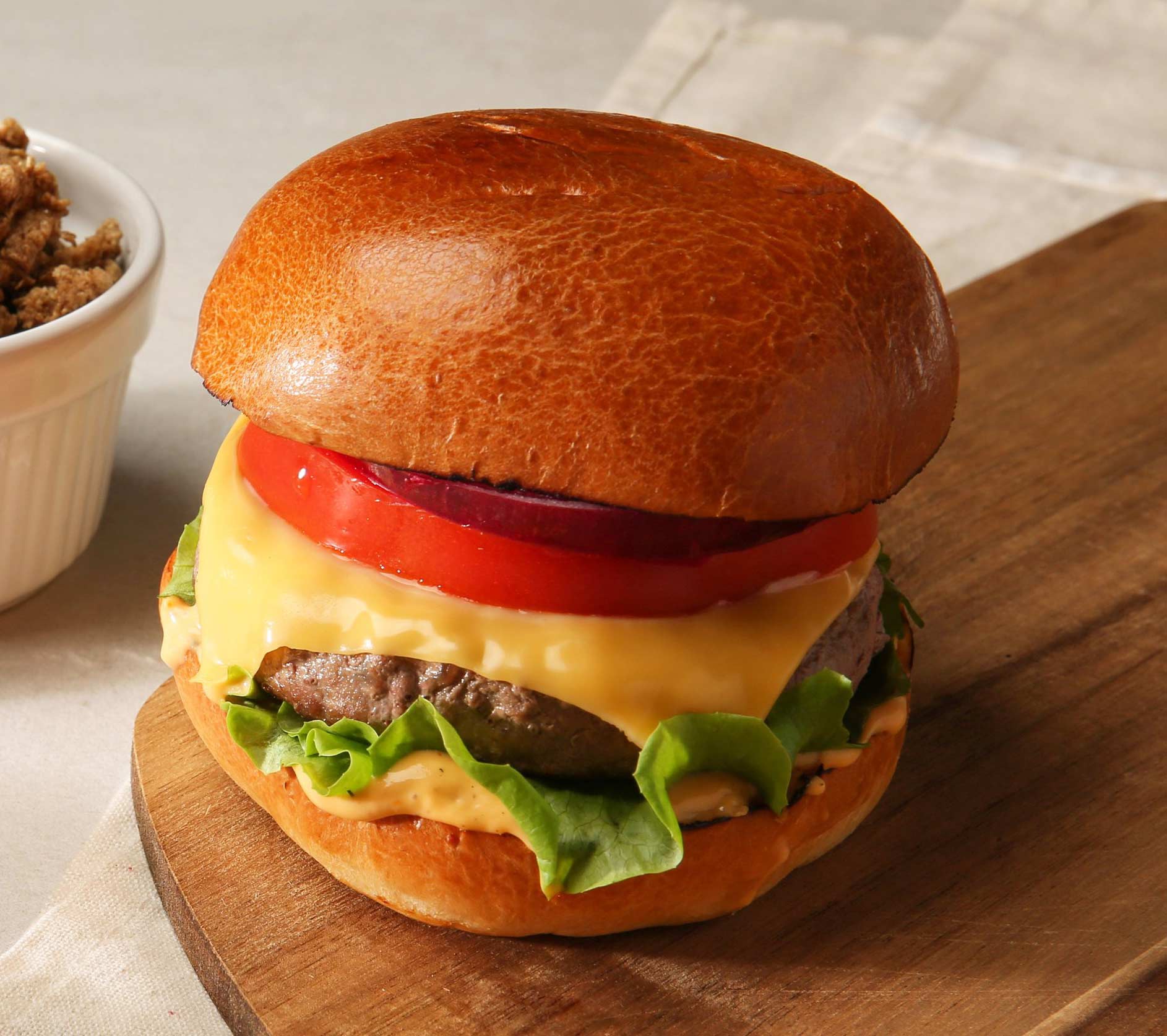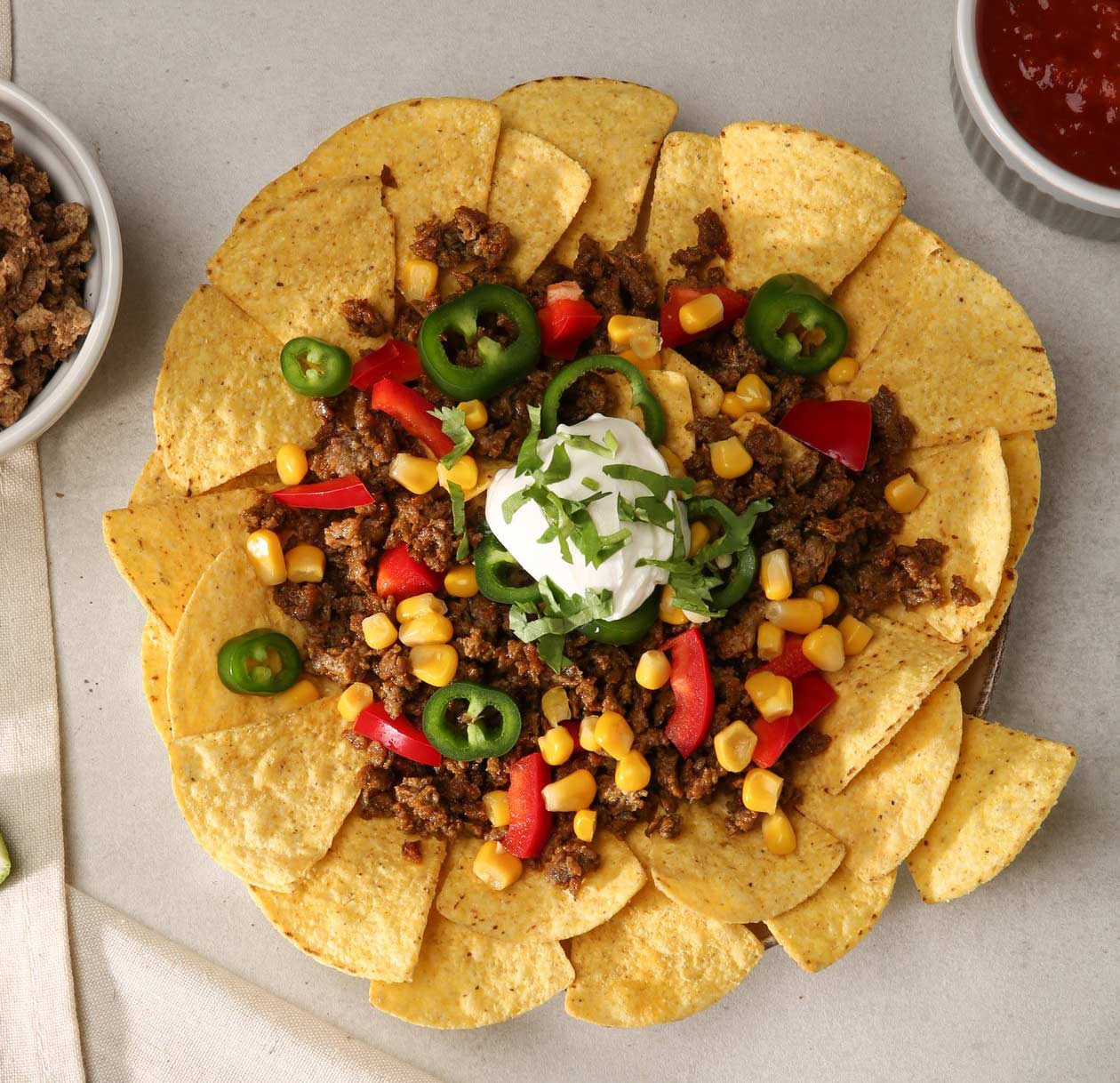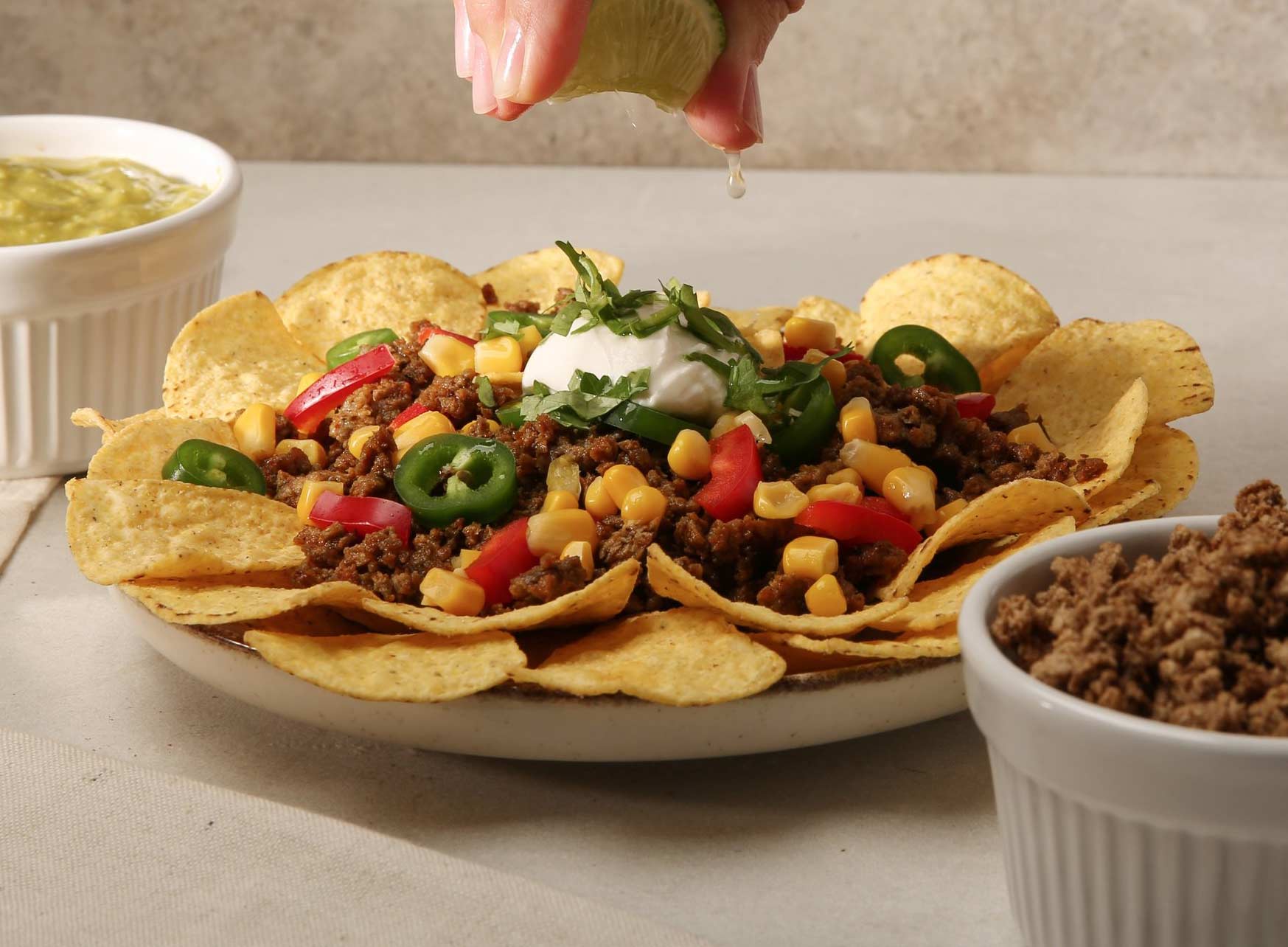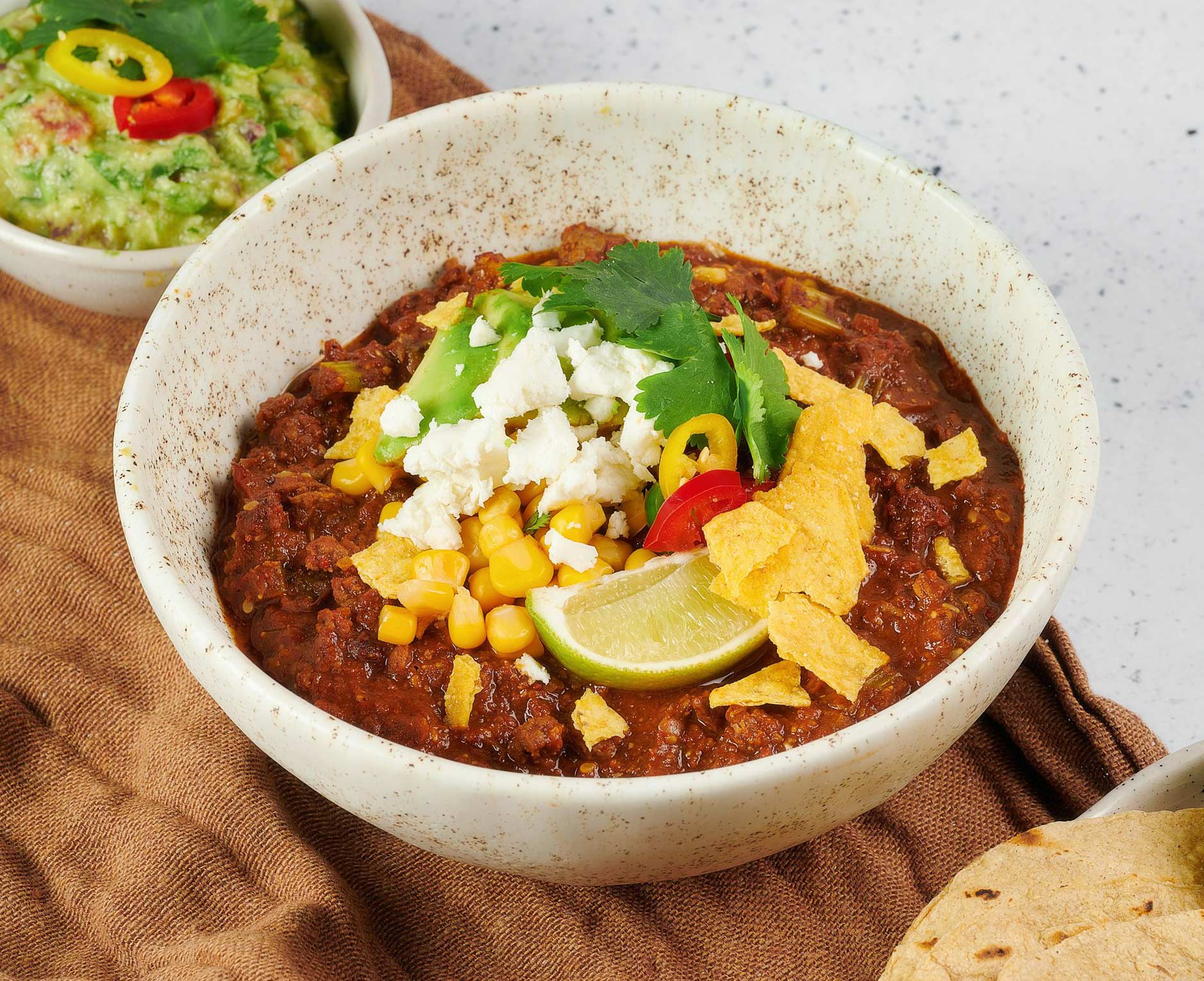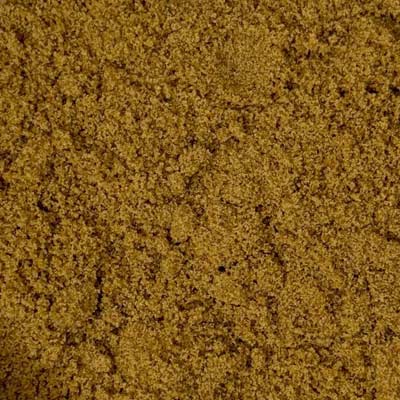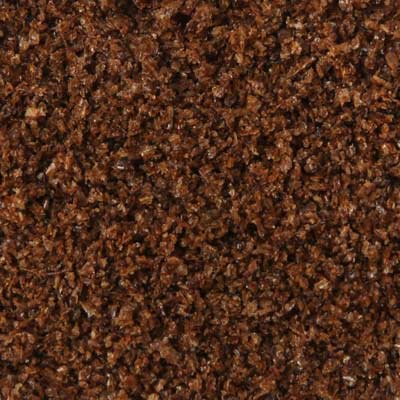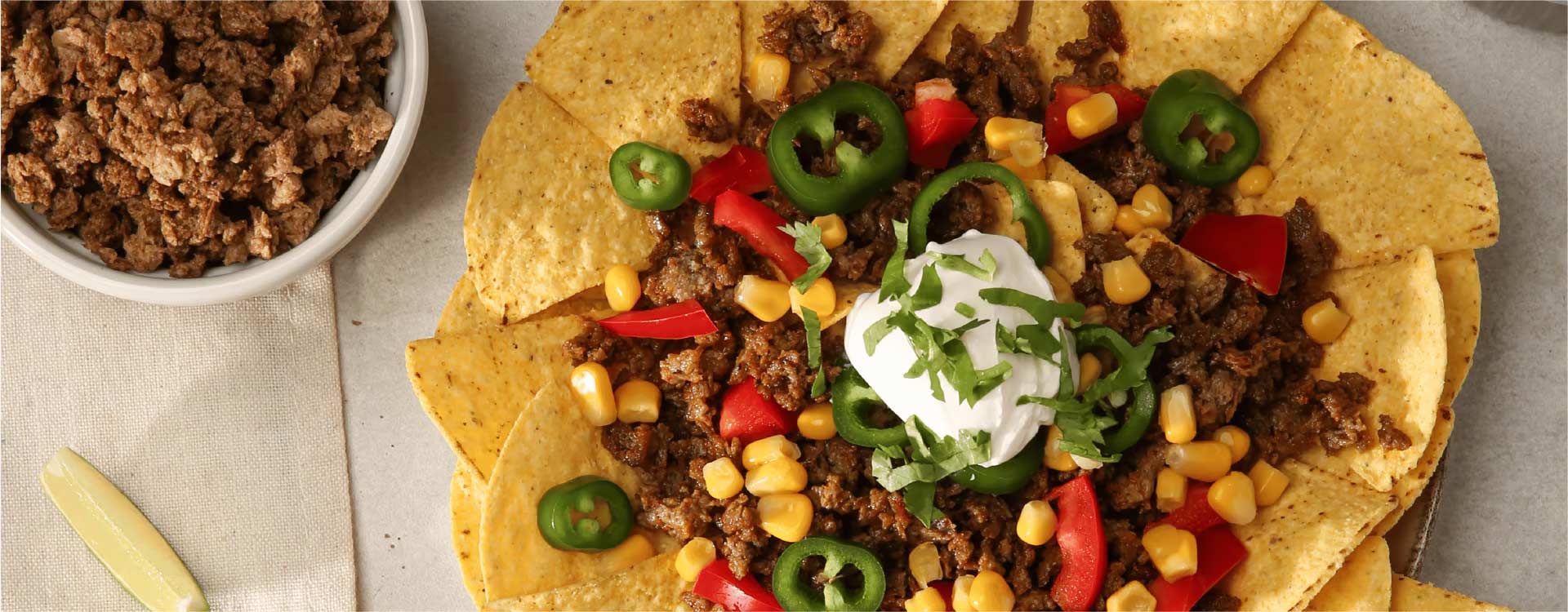

TEXTURED INSECT PROTEIN (TIP)
Textured insect protein (TIP) is a product crafted to revolutionize your meat alternatives. Our insect protein delivers a delightful, slightly nutty, umami flavour that adapts to your preferences effortlessly. This product combines high-quality insect and pea proteins, offering a balanced nutritional profile. It is suitable for athletes, health-conscious consumers, and those looking to reduce their environmental footprint. It provides a complete range of essential amino acids with a protein content of over 61%. The protein’s exceptional water-binding capacity and retention enhance your product’s yield, ensuring optimal texture and juiciness. Upon integration into your culinary creations, our textured insect protein elevates dishes to new heights, seamlessly emulating the texture of traditionally cooked ground meat. Adding your preferred seasonings and sauces amplifies culinary versatility, accommodating a spectrum of palates and preferences.
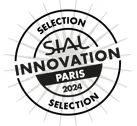

Possible applications
Get your inspiration
Nutrition & Health
- Rich in proteins – contains >61% protein.
- Complete proteins – all 9 essential amino acids.
- Hybrid proteins – consists of animal and plant-based proteins.
- Healthy fats – up to 70% of unsaturated fatty acids.
- Dietary fibres – contains 5%.
- Free from eggs, dairy and soy.
Benefits and key features of textured insect protein
Nutritional benefits
- High protein content. With >61% protein, textured insect protein provides a complete amino acid profile to support muscle growth, tissue recovery and overall well-being. This product is ideal for anyone focused on a higher protein intake, such as athletes or individuals aiming to build muscle mass and maintain a lean body composition.
- Low in cholesterol. Insect protein, unlike traditional protein sources, is significantly lower in cholesterol – only 53.6 mg per 100 g of product, compared to 89 mg in beef and 86.5 mg in pork.
- Moisture retention. One of the distinctive properties of textured insect proteins is their ability to retain moisture. With an absorption rate of 2,2 g of water per 1 g of product, it keeps the product juicy and tender. This property is particularly useful when using insect protein as a meat substitute, where moisture is essential to replicate the traditional texture of meat.
- Natural taste and texture. Textured insect protein has a subtle nutty and umami flavour, making it versatile and suitable for a wide range of recipes. The unique texture is similar to minced meat; thus, even when prepared with a meat substitute, the dish retains an authentic, pleasant, and familiar feel. This combination of taste and texture makes it easy to incorporate insect-based protein into everyday dishes without overpowering other flavours.
Sustainability
The production of textured insect protein consumes far fewer resources than the extraction of conventional protein sources – e.g. beef and poultry. How so? Insect rearing requires far less water, land and feed, and produces fewer greenhouse gas emissions. By using meat substitutes such as insect-based protein, consumers are not only choosing a healthy, nutritious diet but are also helping to reduce the strain on our planet’s resources.
Explore other products
Preparation of textured insect protein
Textured insect protein: frequently asked questions
What is textured insect protein made of?
Textured insect protein is made from a mixture of yellow mealworm (Tenebrio molitor) and and pea protein. This combination is a complete source of protein with all essential amino acids, making it a valuable ingredient for food manufacturers looking for innovative and sustainable protein options.
How should textured insect protein be stored?
Store non-hydrated textured insect protein in a cool, dry place away from direct sunlight. Use the product within 24 hours after moistening and store it in a refrigerator at a temperature between +2°C and +10°C to preserve its freshness and quality.
What are the best applications for textured insect protein in food production?
Textured insect protein is versatile and works well in a wide range of food applications, such as meat substitutes, soups, stews, and snacks. For dishes where a seamless texture is essential, we recommend using textured insect protein powder (TIPP).
Are textured insect proteins compatible with existing food production equipment?
Yes, textured insect protein can be easily integrated into standard food production processes. The product is compatible with common processing methods such as mixing, mashing, or baking, making it adaptable to a wide range of dishes.
How long does it take to prepare textured insect protein for industrial use?
Hydrating textured insect protein is a simple process that typically takes between 15 and 30 minutes, depending on whether hot or cold water is used. Hydration improves the texture of the product, making it juicy and soft – ideal for a wide range of food production applications.
What is the flavour profile of textured insect protein? Does it influence the final taste of the dish?
Textured insect proteins have a mild nutty and umami-like flavour that brings out savoury dishes without overpowering other ingredients. This subtle flavour makes it versatile and easy to use, especially in meat alternatives, where it gives a pleasant, natural taste.

